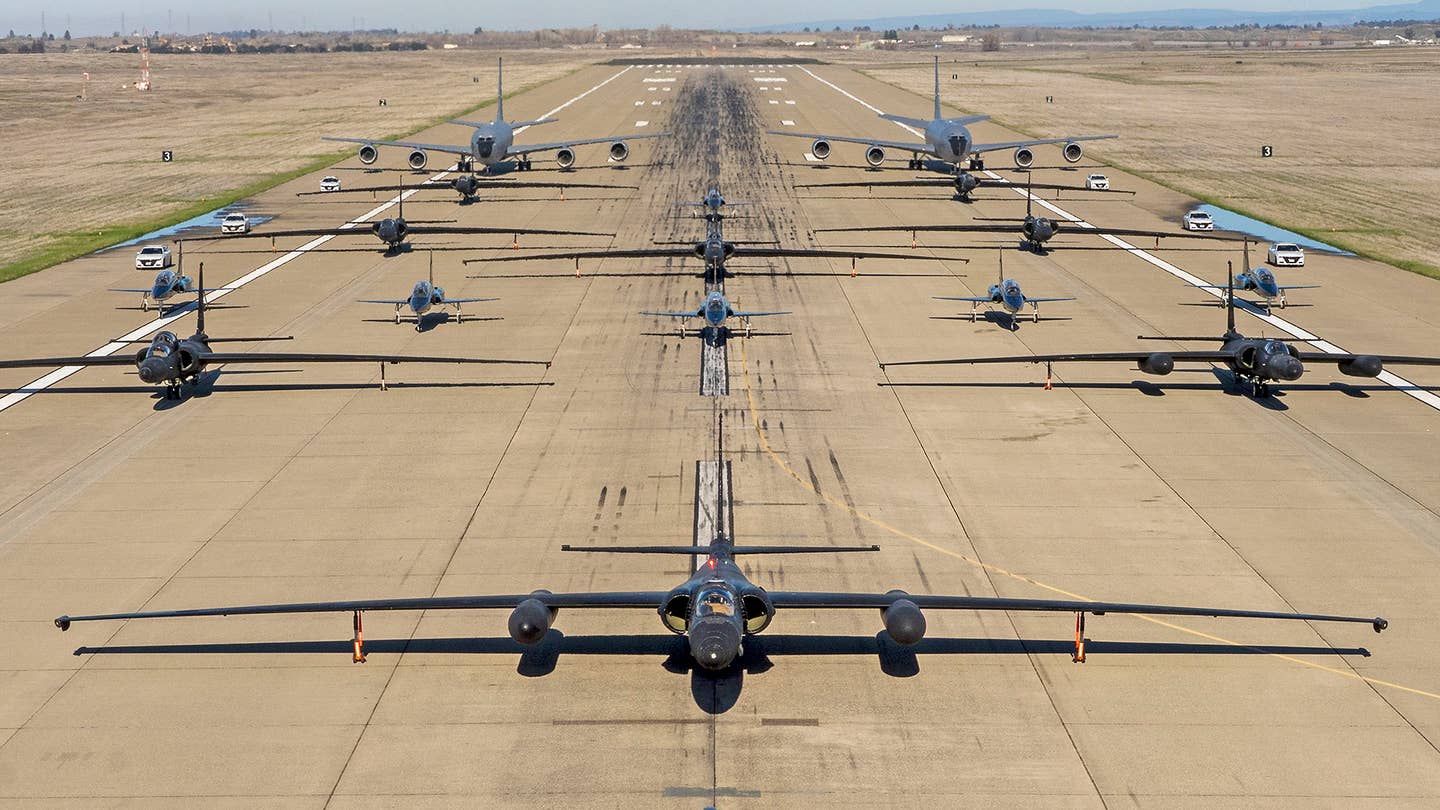U-2s, T-38s, and KC-135s lined Beale AFB’s runway in an impressive display, but the U-2’s time in the service looks to be coming to an end.

Located in central Northern California, Beale’s most well-known and long-term resident, the U-2, is in its final years of service. As it sits now, U-2 divestment would begin in late 2025 and wrap up by 2027, marking the end of an absolutely incredible career that has lasted far longer than anyone would have thought when the Dragon Lady first took to the skies over Groom Lake in 1955. This means that the U-2 would exit USAF operations after more than 70 years of flying. NASA would likely still fly the U-2 in its ER-2 configuration in very small numbers.
U.S. Air Force U-2 Dragon Ladies and chase cars from the 99th Reconnaissance Squadron, T-38 Talons from the 1st Reconnaissance Squadron, and KC-135R Stratotankers from the 940th Air Refueling Wing conduct an elephant walk on Beale Air Force Base, California, Jan. 4, 2023. The elephant walk showcased a display of joint airpower between the wings hosted at Beale. (U.S. Air Force photo by Senior Airman Juliana Londono)
The U-2 has been under threat of retirement since not too long after it entered service the better part of a century ago, and especially in recent decades, without those plans coming to fruition. Even the RQ-4 Global Hawk drone failed to replace the U-2 as planned. In fact, this elephant walk would have had Global Hawks on the runway just a year and a half ago, with the type being pulled from Beale in mid-2022 as its service also gets wound down.
But this time seems different, with the USAF making massive (and risky) changes to its force structure now in order to be able to better fight in a highly contested battlespace sometime in the future. In November of 2023, Secretary of Defense Lloyd Austin moved forward with the U-2 retirement process, which you can read more about here.
As for what comes next to replace the U-2, and the RQ-4 to an extent, the high-flying stealthy ‘RQ-180‘ appears to be waiting in the shadows, along with a whole new array of space-based capabilities. Distributing reconnaissance to multiple smaller flying nodes that are networked together and can operate further forward is also clearly a work in progress. But still, even with these advances geared to being able to persistently glean intelligence in very hostile areas, what will be lost with the U-2 cannot be understated.
U.S. Air Force T-38 Talons from the 1st Reconnaissance Squadron, U-2 Dragon Ladies and chase cars from the 99th Reconnaissance Squadron, and KC-135R Stratotankers from the 940th Air Refueling Wing conduct an elephant walk on Beale Air Force Base, California, Jan. 4, 2023. The elephant walk showcased a display of joint airpower between the 9th Reconnaissance Wing and 940th hosted at Beale. (U.S. Air Force photo by Staff Sgt. Frederick A. Brown)
The aircraft provides an incredibly flexible, multi-role capability that, in a multitude of ways, an unmanned asset cannot rival. While the U-2’s missions have to occur in more permissive airspace, near the edge of the enemy’s counter-air reach during a time of conflict, for everything else, especially during peacetime, the U-2 is the ultimate high-flying strategic intelligence, surveillance, and reconnaissance (ISR) ‘truck.’
While it isn’t cheap to operate and pilots are definitely not inexpensive to train and keep current — hence the T-38 companion trainers — we can’t count the U-2 out fully, even after it has disappeared initially. The USAF may find it is a capability it cannot live without. Ideally, the U-2 would stay in the inventory alongside an advanced penetrating strategic reconnaissance drone (RQ-180). They would complement each other incredibly well. But doing so would require the USAF to pull out its pocketbook to a degree it does not seem willing to do, at least a this time.
Contact the author: Tyler@thedrive.com


